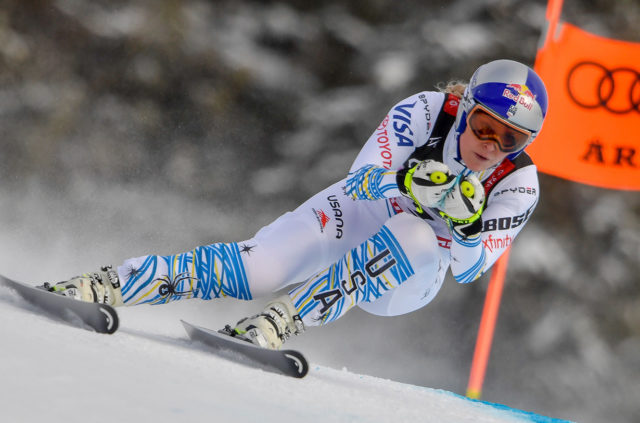TOPICS & TIMES:
- How Cam got started at HEAD (1:00)
- The art of edge tuning (3:03)
- Why athletes have 50 skis per discipline (8:09)
- Superstitions & cinnamon rolls (9:08)
- The elusive “speedwagon” (10:25)
- Base angles vs. Edge angles (13:20)
- What is a second edge?? (20:00)
- How quickly do skis dull? (22:45)
- Athlete’s relationships to their tuners (24:50)
- Polishing stones & the toilet paper test (28:30)
- De-tuning to avoid hooking (31:57)
- Base materials & grind patterns (35:07)
- How to select your wax (45:16)
- Just how sensitive are pro athletes? (58:12)
How do the world’s elite ski racers and their technicians squeeze every drop of performance out of their skis? We sat down with Cameron Smith who runs the race department for Head USA to learn about all the major aspects of ski tuning including base vs edge angles, base prep, and waxing. We also discuss why World Cup racers have 50 skis per discipline; the elusive “speed wagon”; and the delicate balance of science and superstition in ski racing.


Excellent podcast, really interesting insight into tuning, thanks guys
Thanks for another great podcast. A couple of questions for Cam:
– Are the white, fuzzy areas on my base that appear underfoot after every day of skiing doing permanent damage to my skis?
-I wax before every day of skiing, but will waxing multiple times over the summer with a base-prep wax help prevent “the white fuzzies”?
The white fuzzies that you see are probably either “hairs” left by the grinding process, or (more likely) abraded wax left because you didn’t brush down to a microscopically thin layer before skiing. If you’re waxing every day then I don’t think you could do permanent damage unless you’re going 80 mpg and making World-Cup-level turns.
Are you “de-hairing” your skis with ultra-fine ScotchBrite (or “FiberTex” if you want to pay several times more for the exact same material) after having your skis ground? If not then that would easily be what you’re seeing.
I know this is a super-old episode, but I want to say that Sam’s instincts and questions are outstanding, in some cases better than Cam’s answers.
A couple specific remarks:
1. Sam’s observation that structure/tread goes against hydroplaning is right. There typically isn’t enough free water in/on the snow to plane up on the water, even at DH speeds, so it’s a better strategy to channel the water away. That’s why we use “more tread” (coarser structures) in wetter conditions. I would guess that we’d do the opposite in a water ski?
2. Sam is right that linear structures tend to “lock the ski in”, and that’s why cross-hatch structures (whether coarse or fine) are more common in the turning-intensive tech events. The (admittedly simplified) way I think of this is that coarse vs fine depends on the free water content of the snow (which is mostly temperature-history-dependent) while linear vs cross-hatch depends on the “maneuverability” required for the event.
3. I think that Cam is right about fluoro use on the WC, even today. There are some racers like Aksel Lund Svindal that “use MountainFlow”, but I would note that they never say that those racers _exclusively_ use MountainFlow. That will change when the fluoro ban finally comes into effect next year. The advantages in terms of hyrophobicity and oleophobicity (resistance to dirt/oils in dirty snow) are simply too great.
4. Ironed-in fluoro overlays like WetJet or the Swix FC series last more than the first couple turns. There’s extensive research from the nordic side indicating that they last for many kilometers, especially in wetter and less-abrasive snows (which is exactly where they have the biggest benefit)
Another thing that Cam sort of alludes to in the context of Vonn’s frustration at burning her bases, but doesn’t explain, is the need to “harden” the base using cold (hard) waxes. I know for a fact that WC-level Alpine techs do this as well (as Cam alluded).
Base-burning requires a combination of high speed, high turning forces, and aggressive snow. It probably won’t happen to you unless you’re pulling several G’s of turning force at over 60 mph. I’ve never truly managed it FWIW, though most of my racing skis had/have hard inserts as Cam described, I raced on the West coast where it’s less common, and I’m pretty fastidious about base-hardening (see above).
I’ve never been remotely near the top 30 in the world, and I can tell a degree change on the side if I’m riding on racing-hardness snow. I can tell a half-degree on the base, because the difference in “immediacy” of initiation is really obvious. I would buy that the Hirschers of the world could tell a couple tenths just as easily as they can tell what color polyurethane went into their boots (Matt Manser brought that up in another GEAR:30 IIRC)